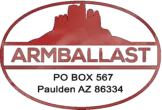Since the beginning of railroading, boxcars have been put to use in the transportation of materials and goods across America. In modern-day, boxcars still play a role in the movement of bulk materials. With thousands of these boxcars still in operation. While original designs are still retained, there are several important details to consider when modeling a 21st-century boxcar.

REFLECTIVE STRIPS
As they have been mandated by the Federal Road Administration for the past few years., Reflective strips are one of the most common features on freight cars today. These orange or yellow patches allow for greater visibility at night. Are designed to prevent vehicles from colliding with moving trains on unprotected or dimly lit crossings.
REPORTING MARKS
Most railroads and leasing companies prioritize adding their FRA Reporting Mark over their name and logo. These marks come in the form of three or four letters combinations, usually ending with ‘X’. All freight equipment is required to display these marks. So this feature is a must when modeling a modern boxcar. Even on equipment that features the name and logo of the operator.
PATCHED NUMBERS, LETTERING, OR PAINT
Most boxcars currently in use are actually decades old. Many bear the scars of multiple owners and paint schemes. Even more recent cars will often appear to have been renumbered at some point. Some wear the faded liveries of fallen flags. With only patched reporting marks signifying their current ownership. At the same time, others have been entirely repainted. It’s rare to see a boxcar in a spotless scheme without one or more of these features.
NO ROOF WALKS
Roof Walks were a common feature on boxcars from the early days of US railroading to the postwar era. Used by train crews to go from car to car, these walkways were extremely hazardous. In 1968, the FRA ruled to outlaw their use and mandated that all Roof Walks be removed by 1978. For a boxcar to have an accurate modern appearance. These should not be featured, or should be removed from the model.
END OF TRAIN DEVICES
Replacing the traditional and much-loved caboose, End of Train devices became a fixture of all mainline freight trains in the late 80s. Also known as FREDs (flashing rear end devices). These can be seen attached to the air hose of the last car on most freights. Short lines and industrial railroads typically don’t use EOTs. But include a red flag mounted to the coupler in their place.
There are several other details, such as bodyside markings and devices such as AEI electronic recognition systems. Newly produced boxcars are made with some or all of the features included. There is a wide selection of third party detail kits, decals, which can bring your legacy rolling stock up to standard for a prototypical 21st-century layout.
Other Articles
SOURCES
- https://blog.modeltrainstuff.com/detailing-a-modern-boxcar/
- https://en.wikipedia.org/wiki/Boxcar
